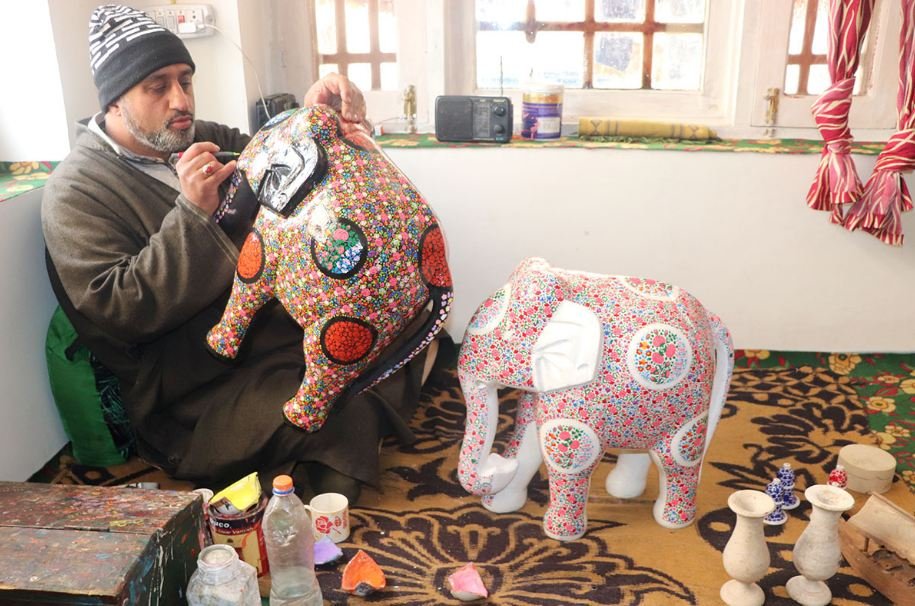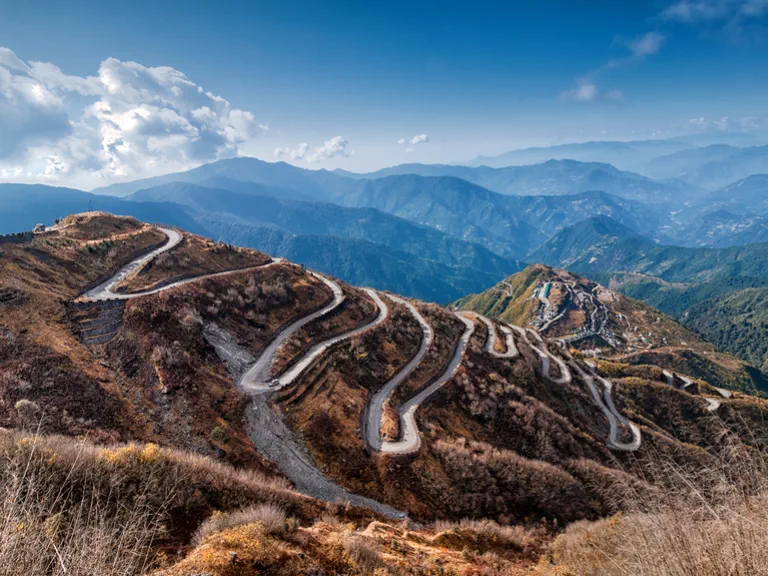Introduction
The Himalayan Silk Road was an ancient network of trade routes connecting India with Central Asia, China, and Europe. The roads are known for their strategic importance, facilitating the exchange of goods, ideas, and cultures between different regions and civilizations.
India’s Himalayan Silk Road is an important part of this network, connecting the country’s northern regions to the rest of the world. The article presents the history of the Himalayan Silk Road in India, with a special focus on the states of Kashmir, Himachal Pradesh, and Uttarakhand.
History of Silk Routes
The Silk Road has been used for thousands of years. Traces of trade along the routes date back to the second millennium BC. The streets are named after the silk trade, one of the most important commodities traded on the streets. However, the streets were used for trading in a variety of goods, including spices, gems, textiles, and pottery.
The streets have also facilitated the spread of religion, art, and literature as Buddhism, Hinduism, and Islam spread along the streets. The Himalayan Silk Road played an important role in India’s history, shaping the country’s trade, culture, and politics for centuries.
The roads are strategically located and pass through regions of North India rich in natural resources and vibrant cultural life. The Silk Road has facilitated the exchange of goods and ideas between India and its neighbors, contributing to the country’s economic growth and cultural diversity.

Kashmir
Kashmir has a long and rich history of silk production and trade. The region’s favorable climate and natural resources make it an ideal place for the production of high-quality silk fabrics. The Silk Road in Kashmir played an important role in connecting India with Central Asia and China and played a key role in the development of the local economy. The Silk Road in Kashmir dates back to ancient times and was used to transport silk, spices, and other luxury goods. The Silk Road traversed the Himalayan region and was an important part of the trade network connecting India with its neighbors. Prized for its quality and texture, cashmere-silk is in high demand in Central Asia and China.
The Silk Road in Kashmir is all about trade in goods and the exchange of cultures, ideas, and traditions. Crossing the Silk Road, traders brought new ideas and technologies with them and enriched the local culture. It has played a key role in the development of local handicrafts and has contributed to the development of new silk embroidery and weaving techniques. The Silk Road in Kashmir has also played an important role in the development of the local economy. The silk industry is an important source of income for the local population and creates employment opportunities for thousands of people. The Silk Road provided the region with a stable source of income, which also helped develop other industries.
The Silk Road in Kashmir was not without its challenges. Rough terrain, harsh weather conditions, and the threat of muggers and looters made traveling along the Silk Road dangerous. Merchants and traders were not discouraged, however, and continued their trade along the Silk Road. Today, the silk industry in Kashmir continues to grow and remains an important source of income for the local community.
The Silk Road in Kashmir has stood the test of time and continues to play an important role in the economic and cultural development of the region. In summary, the Silk Road in Kashmir plays an important role in connecting India with Central Asia and China. The Silk Roads played a key role in the trade of silk and other luxury goods and played an important role in the exchange of cultures and traditions. The Silk Road in Kashmir is a testament to the region’s rich history and its contribution to the growth and development of the local economy.

Himachal Pradesh
Himachal Pradesh is another state in India that has been an important center of silk production for centuries. The state is known for its high-quality silk fabrics, and the silk industry is the local community’s main income source. Himachal Pradesh is located in northern India and borders the Himalayas. The country has a rich cultural heritage and is famous for its beautiful and scenic views. The state is also known for its high-quality silk fabrics, which are produced in numerous silk production centers across the state.
The silk industry in Himachal Pradesh dates back to ancient times and is an important source of income for the local community. The milk produced in Himachal Pradesh is known for its high quality and soft texture and has therefore enjoyed great demand in the domestic and international markets for centuries. The Silk Road in Himachal Pradesh was an important part of the trade network connecting India with Central Asia and China. The Silk Road led through the Himalayas and served to transport silk, spices, and other luxury goods.
The Silk Road in Himachal Pradesh has also played a key role in the exchange of cultures, ideas, and traditions. The Silk Road in Himachal Pradesh mainly transported raw silk from China to India. Silk was shipped from China to the Himalayas and made into fine silk fabrics. The silk fabrics are then shipped to different parts of India and sold in the domestic and international markets. The silk manufacturing centers of Himachal Pradesh are mainly located in the Kinnaur district, which is known for its high-quality silk fabrics. The silk production centers of Kinnaur are mainly located in the villages of Sangla and Chitkul, which are important silk production centers.
Silk made in Himachal Pradesh is known for its high quality and soft texture. The silk fabric produced in the state is mainly used to make saris, scarves, and other traditional garments. Silk fabrics made in Himachal Pradesh are also exported to different parts of India and other countries. The silk industry in Himachal Pradesh has faced many challenges in recent years, mainly due to competition from synthetic fabrics and declining demand for traditional garments. However, the state government has taken several steps to encourage the silk industry and restore traditional silk production centers.
In recent years, the state government has provided financial and technical assistance to local communities to help them upgrade their silk production centers and improve the quality of their silk fabrics. The state government has also organized several training programs and workshops to educate the local population in modern silk-making techniques. In summary, the Himachal Pradesh Silk Roads have played an important role in the trade of silk and other luxuries between India and its neighbors. The silk production centers of Himachal Pradesh have been an important source of income for the local community for centuries and have significantly contributed to the development of the local economy.

Uttarakhand
Uttarakhand has been an important silk manufacturing center for centuries. The state has a long history of silk production, and the silk industry is the local community’s main income source. The Uttarakhand Silk Industry is known for its high-quality silk fabrics, which are popular in domestic and international markets. The Silk Road in Uttarakhand was an important part of the trade network connecting India with Central Asia and China. It has also played a key role in the exchange of cultures, ideas, and traditions. The city of Bhagalpur in the state of Uttarakhand is famous for its silk production.
The silk produced in Bhagalpur is known for its high quality and unique designs. Silk made in Bhagalpur is also known as “Tussar Silk”. Tussar silk is made from the cocoons of silkworms that feed on the leaves of the Sal and Arjun trees. The silk in these cocoons is known for its durability and natural yellow color. The silk produced in Bhagalpur is used to make a wide range of products, including sarees, shawls, sashes, and fabrics. Besides Bhagalpur, Uttarakhand is also known for silk production in the cities of Dehradun, Roorkee, and Haldwani.
These cities are famous for their high-quality silk fabrics and unique designs. The silk produced in these cities is used to make a variety of products, including sarees, shawls, sashes, and woven fabrics. The Silk Road in Uttarakhand played an important role in the development of the silk industry in the state. The Silk Roads were used to transport silk, spices, and other luxuries and played a key role in the development of the local economy. The Silk Road in Uttarakhand has also played a key role in the exchange of cultures, ideas, and traditions. In recent years, the silk industry in Uttarakhand has transformed. The state government has taken several initiatives to promote the state’s silk industry.
The government established several silk production centers and offered training in silk production to local communities. The government has also provided financial support to local communities to set up their silk production facilities. Today, the silk industry in Uttarakhand is thriving and becoming an important source of income for the community. The state is known for its high-quality silk fabrics, and the silk industry has become an important engine of the local economy. The Silk Roads in Uttarakhand still play an important role in the development of the silk industry in the state and continue to be an important part of the country’s cultural heritage.

Conclusion
India’s Himalayan Silk Routes were a crucial part of the network of ancient trade routes that connected the country with the rest of the world. The routes played a significant role in shaping India’s trade, culture, and politics, contributing to the country’s economic growth and cultural diversity.
The states of Kashmir, Himachal Pradesh, and Uttarakhand were all important hubs along India’s Himalayan Silk Routes, each contributing to the region’s vibrant cultural scene and economic growth. The trade along the routes facilitated the exchange of goods, ideas, and cultures between these states and their neighboring regions, contributing to the development of syncretic forms of worship and artistic expression.
The Silk Routes also facilitated the spread of Buddhism and Hinduism in the region, contributing to the religious diversity of the country. The routes played a significant role in shaping the religious landscape of the region, with several important pilgrimage sites being located along the routes.
In conclusion, India’s Himalayan Silk Routes were a testament to the country’s rich cultural heritage and its strategic location as a hub of trade and cultural exchange. The routes played a crucial role in shaping the history of the region and continue to inspire awe and wonder to this day.
Himalayan Dams: The Unseen Risks and Consequences – Trybe News




